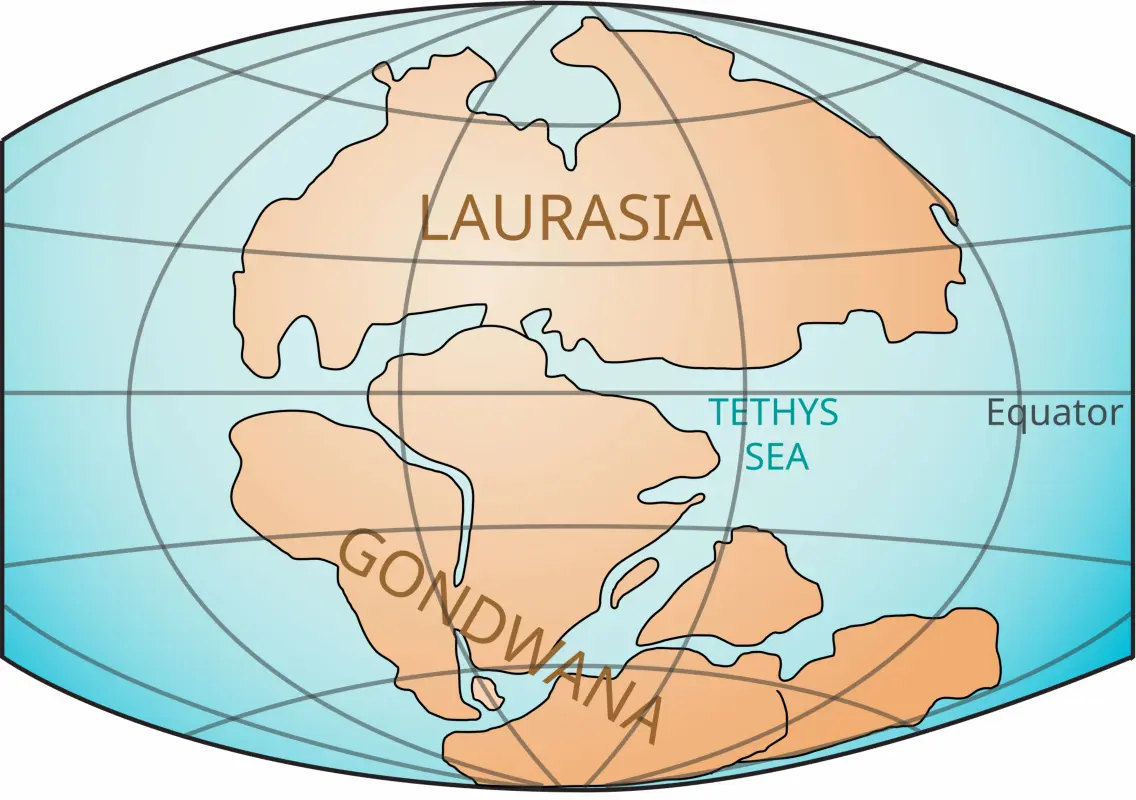Origin of the Himalayas: History, Process and Significance
The Himalayas are not only the highest mountain in Asia but also one of the most remarkable geological formations on Earth. Its snow-capped peaks, deep valleys, mighty rivers and rich biodiversity make it unique. But have you ever wondered how this massive mountain range was formed? When did it originate and what natural forces shaped it? Let us explore these questions in detail.
Ancient Geological Background
About 20–30 million years ago, during the Mesozoic era, the Earth's surface did not look like it does today. Instead of several separate continents, there existed one giant continent called Pangea. Later, it split into two major landmasses:
- Laurasia (Angara Land) – northern part
- Gondwana Land – southern part
Gondwana included the landmasses that later became India, Africa, Australia and Antarctica.

The "Journey" of the Indian Plate
About 150–200 million years ago, the disintegration of Gondwana began. The Indian landmass (Indian Plate) began drifting northward. It was moving at a speed of 15–20 cm per year, which is extremely fast from a geological perspective.
The Tethys Sea lay between the Indian plate in the south and the Eurasian plate in the north. Over millions of years, this sea gradually disappeared due to the collision of plates and eventually the Himalayas were born.
Plate Tectonic Theory and Collision
The most accepted scientific explanation for the origin of the Himalayas is the Plate Tectonic Theory. According to it, the Earth's crust is divided into several large plates that are constantly in motion.
- The Indian plate continued to move northward.
- The Eurasian plate stood as a barrier in the north.
- About 50–70 million years ago, the Indian plate collided with the Eurasian plate.
The collision was so powerful that sediments of sand, clay, limestone and fossils at the bottom of the Tethys Sea were pushed upward. Over time, these sediments turned into the huge mountains we now know as the Himalayas.
Formation of the Himalayas
After the collision, the land did not rise all at once. This process took millions of years and is still ongoing. The gradual uplift of the Earth's crust due to collision is called mountain-building (orogeny).
- In the beginning, small hills formed.
- Over millions of years, layers of sediment continued to build up.
- Eventually, this process created the world's tallest mountain range – the Himalayas.
Stages of Formation
- Initial stage (up to 100 million years ago) – The Indian plate moved northward toward the Tethys Sea.
- First collision (about 70 million years ago) – The Tethys Sea began to shrink.
- Around 50 million years ago – Forceful collision between Indian and Eurasian plates lifted the landmass, giving rise to towering mountains.
- Current stage – The Himalayas are still rising at a rate of about 5 mm per year.
Divisions of the Himalayas
The process of collision and uplift gave rise to
different regions of the Himalayas:
- Shivalik Hills (Outer Himalayas) – youngest, low-lying mountains with river deposits.
- Lesser Himalayas (Himachal Range) – medium-altitude, home to valleys and ranges.
- Greater Himalayas (Himadri) – tallest and most ancient part, includes Everest and Kanchenjunga.
Geological Evidence
- Marine fossils found in Himalayan rocks show that the region was once under the Tethys Sea.
- Limestone, shale, sandstone confirm uplifted sedimentary deposits.
- Frequent earthquakes prove the Indian and Eurasian plates are still colliding.
Importance of the Himalayas
- Climate regulation – Acts as a barrier to cold Central Asian winds, creating a livable climate in South Asia.
- Origin of rivers – Major rivers like Ganges, Yamuna, Indus, Brahmaputra originate here.
- Cultural & Spiritual value – Revered in Hinduism and Buddhism, dotted with holy shrines and pilgrimage routes.
- Economic significance – Supports agriculture, hydropower and tourism.
The Himalayas Today: Still Growing
The Himalayas are not static – they are young fold mountains. The Indian plate moves north at about 5 cm per year, resulting in:
- Annual rise of the Himalayas by a few millimeters.
- Frequent earthquakes and landslides.
- Continuous changes in topography and river systems.
Thus, the Himalayas are still "under construction".
Conclusion
The Himalayas were born out of one of the greatest geological events in Earth's history – the collision of the Indian Plate and the Eurasian Plate. What was once the Tethys Sea became the world's tallest mountains. Their origin tells us that the Earth is dynamic, always changing. Today, the Himalayas stand not only as a natural wonder but also as the lifeline of Asia, shaping its climate, culture and civilization.


